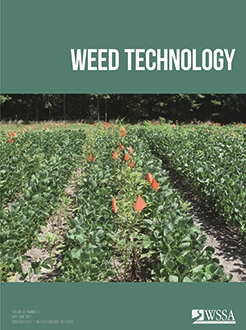Foothill deathcamas is a bulbous, perennial, native forb found throughout the western United States. Deathcamas begins growth early in the spring. The lack of alternative forages at this time can result in livestock becoming poisoned from the consumption of deathcamas. Research on herbicides for deathcamas control is limited to work from the 1950s and 1960s that identified 2,4-D as a control agent. The objective of this study was to evaluate alternative herbicide options for deathcamas control that include 2,4-D, 2,4-D + triclopyr, quinclorac, aminopyralid, imazapic, and chlorsulfuron. We also investigated the impact of plant growth stage on deathcamas control by making herbicide applications at two growth stages. One set of plots was treated with herbicides when deathcamas was in the early vegetative stage and the second set was treated at flowering. There is some evidence that stress might affect alkaloid content; therefore, we monitored alkaloid content of treated and nontreated deathcamas. Plots were established at Mt. Sterling, UT, and Mt. Pleasant, UT. Deathcamas density was reduced in 2,4-D, 2,4-D + triclopyr, and imazapic treatments 1 and 2 yr after herbicide application (P < 0.0001). Compared with the pretreatment densities, deathcamas densities(± standard error of the mean) 2 yr after herbicide application were reduced 96% ± 1.4%, 100% ± 0%, and 98% ± 0.9% for 2,4-D, 2,4-D + triclopyr, and imazapic, respectively, at the Mt. Sterling site. At the Mt. Pleasant site, deathcamas density was reduced by 84% ± 2.8% with 2,4-D alone, whereas 2,4-D + triclopyr and imazapic provided similar density reductions as observed at the Mt. Sterling site. Steroidal alkaloid concentrations did not change in herbicide-treated deathcamas at either stage of plant growth. These data indicate that 2,4-D, 2,4-D + triclopyr, and imazapic can effectively control deathcamas in the vegetative and flowering growth stages.
Nomenclature: 2,4-D; 2,4-D + triclopyr; aminopyralid; chlorsulfuron; imazapic; quinclorac; foothill deathcamas, Zigadenus paniculatus (Nutt.) S. Watson






